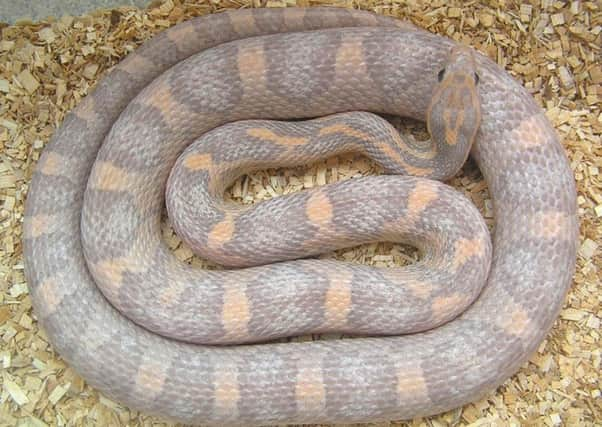Animal Matters


There are over 600 different colour and morph variations of corn snakes, however the ‘normal’ (Carolina) is bright red to orange with black markings.
Corn snakes can live for over 18 years so are a long term commitment.
Advertisement
Hide AdAdvertisement
Hide AdIn the wild they like to live in pine forests, rocky outcrops, grasslands and near farms, they are often found inside corn stores hence why they are called
Corn snakes.
They do prefer to spend most of their time on the ground, however, they will appreciate the opportunity to climb.
Keeping a Corn snake in a 4ftx2ftx2ft vivarium will be sufficient – as long as they are allowed out on a regular basis for more exercise. A temperature of range of 21-30°C is good for Corn snakes, with one side being the hot side and the other being the cooler side.
There are a number of ways to heat your vivarium but remember whatever you choose must have a thermostat for safety of the snake. You will need to provide hides on both sides of the vivarium so your corn snake can feel safe to thermoregulate correctly.
Advertisement
Hide AdAdvertisement
Hide AdJust remember all snakes are excellent escape artists so make sure your vivarium is secure!
Corn snakes are fed on rodents. As youngsters they are often fed on mice but as they grow you can move them onto rats. You can get these from most local pet shop nowadays or online. Just remember that they need to be fully defrosted before you can feed them to your Corn snake. Please remember that you cannot refreeze any defrosted rodents. Fresh water should be provided in a sturdy bowl for your snake.
As with any new pet you need to do your own research before getting a new animal. We hope you’ve enjoyed learning a bit more about three of the main animals in the exotic pet trade.